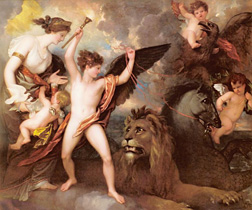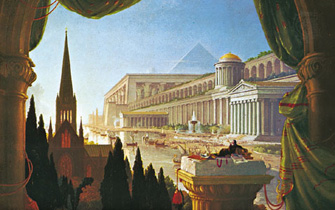 1
1Virtually every major European painter between the late seventeenth and late nineteenth century went to Italy to study its pictorial heritage. When the 'father of American painting', Benjamin West (1738-1820) arrived in Italy in 1760, it heralded the beginning of America's love affair with Italian painting (fig.1). Other Americans such as Thomas Cole (1801-1848), William Louis Sonntag (1822-1900) and Robert Scott Duncanson (1821-1872) soon followed (figs.2-4). Several of the twentieth-century's most influential painters visited Italy and Pompeii and were significantly influenced by what they saw. They include Pablo Picasso (1881-1973), Giorgio de Chirico (1888-1978), Mark Rothko (1903-1970) and Cy Twombly (1928-) (figs.5-8). Publications such as the 1953 SKIRA edition Roman Painting, encouraged several American artists such as Rothko and Will Barnet to visit Pompeii. In many cases a single visit was enough to significantly change an artist's approach to painting. Arnold Böcklin (1827-1901) is an early example of this, after his first visit to Pompeii his paintings dramatically changed from melancholic Germanic landscapes to vibrant magic-realist portrayals of mythological beings (fig.9). As the dream of Italy came to dominate both elite and popular taste throughout Europe the rich on both sides of the Atlantic bought paintings that romanticised Italy. Those with more modest means acquired prints. Paintings and print versions of paintings by Claude Lorrain were particularly popular with the English landed gentry and many palatial estates, such as Stourhead, were modeled upon his idyllic landscapes. Ironically, these fantasized Italian landscapes came to be known as the “English garden”.
 1
1 2
2
|